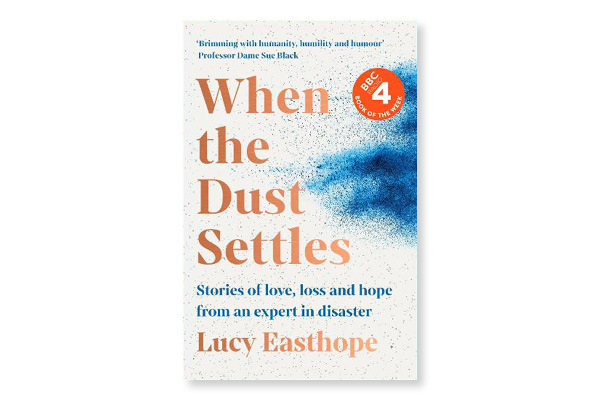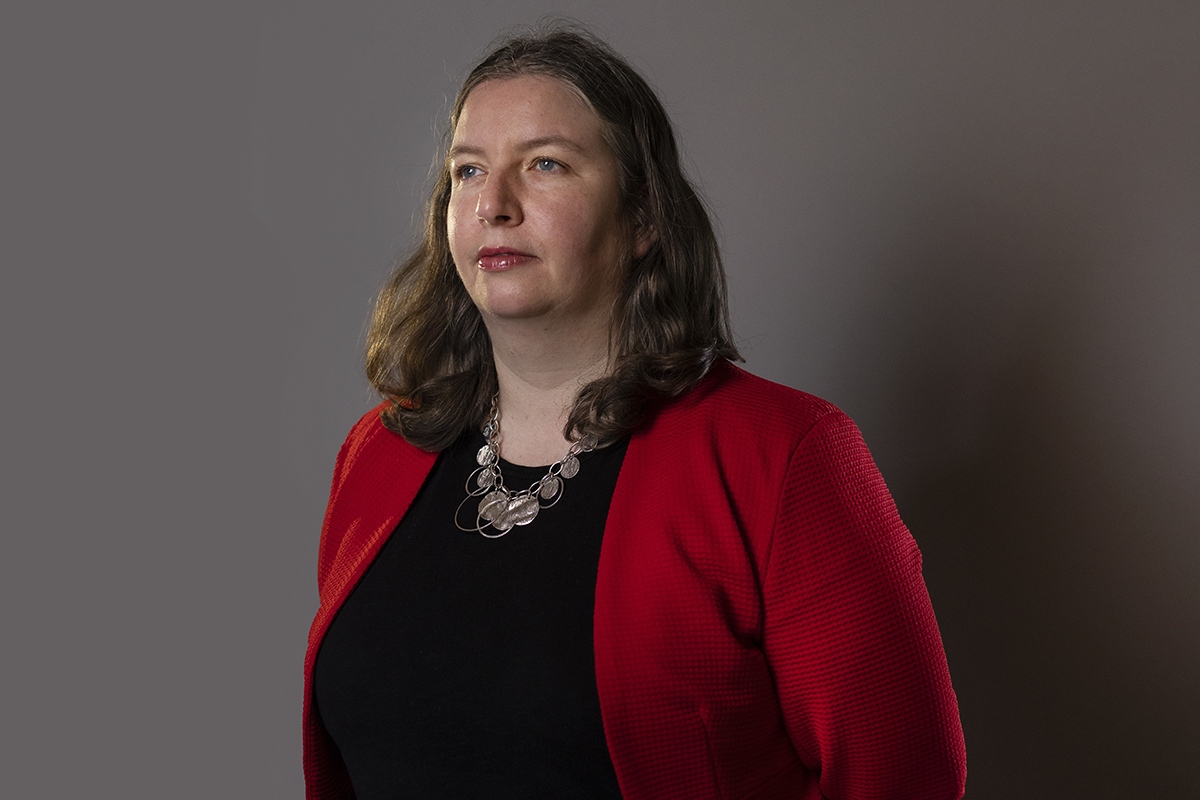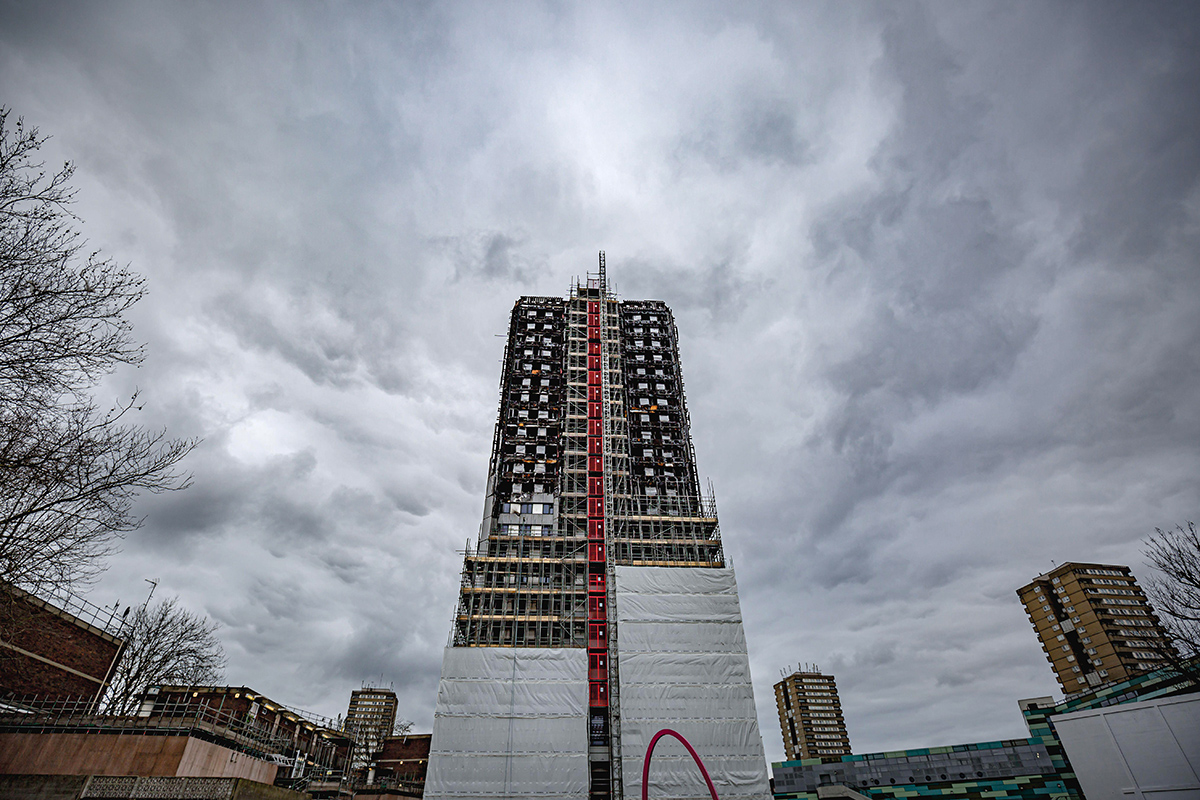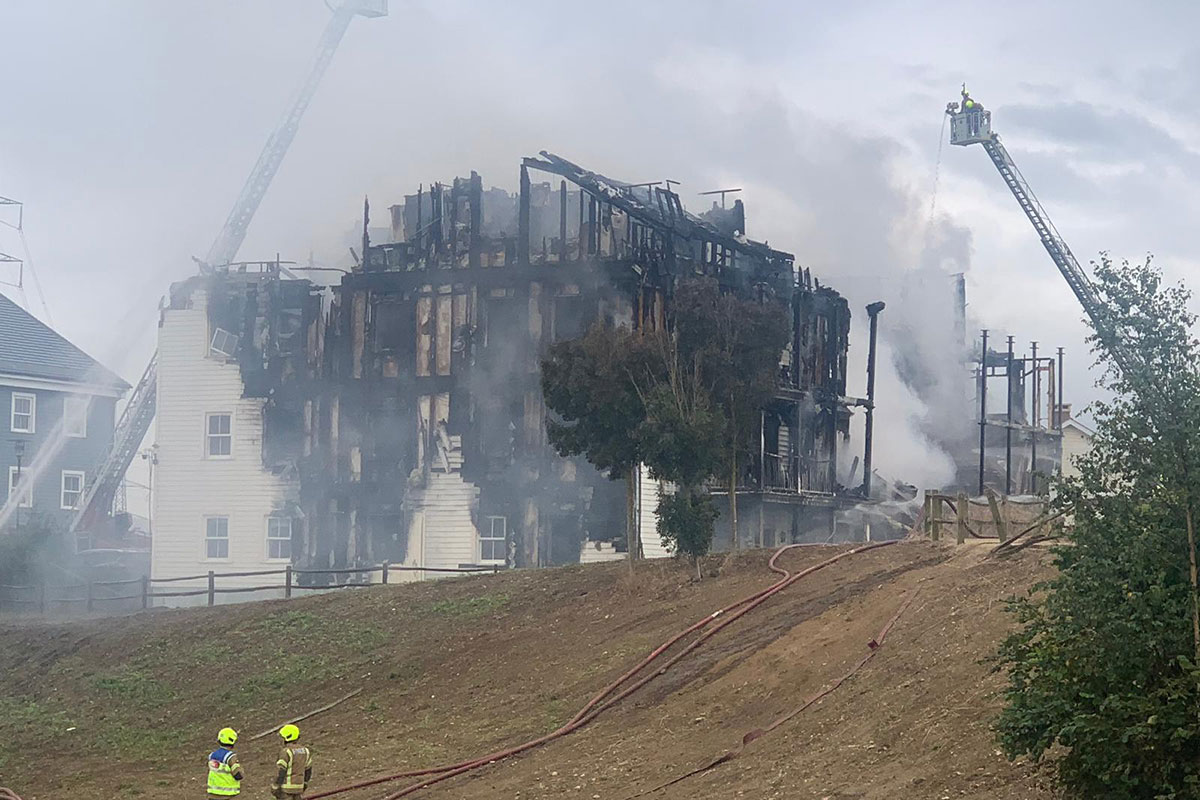How to be ready for a disaster: an interview with Professor Lucy Easthope
How should an organisation prepare for – and respond to – a disaster? Peter Apps meets Professor Lucy Easthope to find out how the housing sector can learn from the response to the Grenfell Tower fire and be prepared for future emergencies in its homes
“Grenfell was our worst nightmare,” says Professor Lucy Easthope.
This is saying something: if what she has seen, studied and planned for over the past 30 years is anything to go by, Professor Easthope probably has worse nightmares than most. She is part of what she calls the ‘disaster community’ – a loose network of professionals whose focus is what comes next.
In her recent bestselling memoir, When The Dust Settles, she describes a life spent focused on the victims and bereaved of the world’s worst recent catastrophes, from Hurricane Katrina to the London Underground bombings and – more recently – the Grenfell Tower fire.
The lengthy public inquiry into the fire at Grenfell is now reaching its latter stages, with an examination of the state’s failure to meet the community’s needs after the fire. Professor Easthope, who has first-hand experience of this, explains that the UK failed to plan for a disaster in which the affected community lost their homes.
“You have this resistance from the police and fire services to building their planning in any way around a housing-based scenario,” she says. “Because what was often a lot cooler to exercise was terrorism at a venue and that would fundamentally lead to a different response, but also, in many ways a different recovery.”
Keep the community together
While flooding is frequent in the UK, the authorities tend to carry out exercises (meaning simulations of an emergency situation) of the immediate flood response and not the aftermath. “We make assumptions that the insurers will cover it and that people will need flood remediation, but ultimately have a house to return to. Fires like Grenfell mean a total loss of the house and then completely new housing stock has to be found – this is the biggest rehoming in decades,” she says.
What the UK was well prepared for was the sort of incident that occurred just weeks before the Grenfell fire: the bombing at Manchester Arena, which killed 22 mostly young fans at a concert of pop star Ariana Grande.
“Once you’ve gathered people’s details, checked them, they’ve got a cup of tea, there’s something that gets the problem sorted for the uninjured, which is to be able to send them home,” Professor Easthope says. “When people have got houses, or the vast majority of people have got somewhere to go, it lets the humanitarian assistance side of the disaster off the hook briefly and gives them time to get their act together.”
“For New Zealand, they use thousands of temporary lodges, because the disaster housing advice had always been to keep the community together”
But the UK was not properly planning for a disaster where the affected community was left with nowhere to go. “We often find that the commanders like to test to a certain amount of trouble and not beyond,” Professor Easthope explains. “There was an avoidance of testing a housing disaster because it was seen as too much of
a problem.”
But as we saw at Grenfell, this weak point left the British state’s systems utterly exposed. Survivors and bereaved were left abandoned in hotels, others slept rough and communication was almost non-existent in the crucial first few days.
Grenfell, sadly, is unlikely to be the last time that a disaster strikes the UK’s housing stock. We know there are thousands of other buildings with fire safety risks, but that is not all. With climate change promising a century of increasing fires and floods, and the risks of incidents such as gas explosions or structural collapse only rising as our building stock ages, it pays to ask what we might do differently next time.
One of the things Professor Easthope advocates is reducing our reliance on hotels. “A golden rule here is you keep the community together. Hotels are a really bad short or long-term solution. We’ve got to find other ways around this.”
She says that in New Zealand there are well-established procedures to build temporary villages for communities that lose their homes. This was tried successfully in the UK in 2007, with 52 residents moved into a purpose-built caravan park in Doncaster following summer floods. The park – with fully functioning utilities – was set up in seven weeks.
“We’ve looked at models for things like the fast construction of very nice temporary lodges, for example,” she says.
In the aftermath of Grenfell, she suggested the provision of something like this in a Royal Park. But without the planning or structures in place beforehand, the state was incapable of putting such a plan into action, and it was certainly beyond the capacity of the local council acting alone.
“It is clear in the disaster literature position that the long-term use of hotels and, in fact, even billeting [putting people up as lodgers with volunteers], as we’re seeing with Ukraine, is really problematic. The best solution is temporary villages. But it was absolutely understood that this could not be done by local councils, it would need to be a central government decision,” Professor Easthope says.
“For New Zealand, they use thousands of temporary lodges, because the disaster housing advice had always been to keep the community together.”
The longer-term provision of housing to the Grenfell community has also been plagued by problems. The government made an ill-advised pledge to rehouse everyone within three weeks, with the process eventually taking a painful two years.
Professor Easthope says some of this came down to the idea that the Grenfell community would happily accept anything they were offered, regardless of their circumstances and needs.
“There is this horrible idea that any help is good help,” she says. “You can see the same with the billeting of Ukrainian refugees in conditions where you wouldn’t put a guest in for a weekend. Yes, I want safeguarding. Yes, I want gas safety checks. This idea that any help is good help has really started to plague UK disasters.”
She says that during the response to the Grenfell disaster, stigmatisation of the residents of the tower made this worse. “I don’t think I’ve ever seen othering like it,” she says. “They were supposed to be grateful that they had John Lewis cards given to them and some of them were saying, ‘Well, I’m Eritrean, and I’ve lost four generations of potware. I can’t get that [at] John Lewis’. Certainly, by about nine months in, you were picking up this sense of ‘what more do they want?’.”
“Yes, I want safeguarding. Yes, I want gas safety checks. This idea that any help is good help has really started to plague UK disasters”
Professor Easthope says that when one of her colleagues came to London to assist with the response, he was booked a hotel and was told, “don’t worry, it won’t be anywhere near them”, meaning the survivors of the fire. She does not know which organisation involved in the response made this comment, but she says that it revealed an attitude. “You knew it was bad when they’re talking about people like that,” she says.
Looking for the heart
So what can the UK’s housing sector do to be better prepared if the next disaster strikes in homes they own?
“If I’m asked to review a housing association’s plan, I’m always looking for the heart. What promises are you making? Can you keep them? Where’s the care and the dignity?” Professor Easthope says.
She says she has worked with local authorities, housing associations and university housing providers almost monthly since Grenfell, amid an increased awareness of the need to be ready for disaster.
A major problem in many plans, she explains, is a difference between what residents will expect and what insurance will cover. For example, if tenants do not have contents insurance, their possessions will not be covered under the organisation’s policy. So to what extent is the landlord going to be willing to help pay for replacement items?
“A lot of my work over the years has been with airlines and holiday companies, who learned a long time ago that there’s what the insurance and the lawyers will pay for, and then there’s what we will pay for,” she says. “If you’re going to run an exercise with me, I’ll probably start it on day three, when all hell’s breaking loose, and your insurers are saying, we’re not covering that and you’re making decisions as a senior management that you’re going to have to behave ethically, above and beyond the legal responsibility you have.”
Another difficulty can be interacting with victims who can – entirely understandably – be very angry with the organisation. At Grenfell, staff from the Royal Borough of Kensington and Chelsea were not present in large numbers at the scene, with some disguising their uniforms. Professor Easthope says this is very firmly not the way to approach a disaster.
“You would meet people who were very clearly from the council but were told to either hide their lanyard or pretend to be from the Red Cross, and I can’t think of worse disaster management advice,” she says.
“The bereaved, the survivors, the residents deserve a very strong presence. Managing that comes down to good training, but most of the public can easily understand the difference between feeling very angry with an organisation, and then on the night itself needing to still be signposted and supported by that organisation. The lack of visibility [at Grenfell] is something I will never understand.”
She adds that there can be problems with some housing organisations if the staff responding do not have the right attitude to residents to begin with.
“Sometimes it creeps in. So you normally do disaster planning with the most senior of the management teams and organisations, and you do come across the idea that housing association properties are for other people. That is a real problem,” she says.
“It becomes obvious in exercises; there’s often quite snotty comments made, like, ‘Oh, how much contents insurance do [tenants] need really?’.”
However, she adds, housing organisations have many people well placed to support communities in these incidents: those with lived experience of social housing, and those who got into the sector because of a concern about social justice. An important task for any emergency response plan a social landlord puts in place is ensuring the staff involved have the right attitude.

Professor Easthope also says that organisations should understand the pressure those affected are under. “I think a huge part of every disaster I’ve responded to is you get into these sort of power plays where the only way that the families have to exert their power is to dissent,” she says. “So I often think we see people wanting to swap their house again and high levels of dissatisfaction with the new housing.”
Emergency response plans do not always cater for these longer-term relationships.
“The plans tend to stop far too early,” she says. “As a housing association, your real work doesn’t come in until after the incident. So are you seeking enough advice, are you check-listing it against the new guidance (see box, below)? How are you digesting the Grenfell testimony? What’s great with an inquiry is that the QCs are essentially giving you a heads-up as to what good practice should look like. How are you distilling that for your own organisation?”
Professor Easthope says she is still waiting to see this change really take effect. “I’m not a fan of what we call the tombstone imperative, but by God, the Grenfell fire deserves a list as long as your arm,” she says. “It was certainly my darkest hour. And then the aftermath. That’s a scar on our soul as a profession.”
It is a scar on housing’s soul as well. And as much as stripping cladding off buildings and installing sprinklers is a way of repairing that, so is properly planning for what to do next time it all goes wrong.
How to respond to a local housing emergency: a practical guide
New guidance published by the Local Authorities’ Panel and the Housing Directors’ Group at London Councils sets out some key principles for a local authority responding to a housing emergency. Actions include:
● Reviewing the council’s emergency plan and ensuring local housing associations have up-to-date plans and responsible lead officers
● Talking to local housing associations about their insurance policies and capacity for securing emergency accommodation
● Ensuring finance and audit offices can provide sufficient funding for the emergency response
● Reviewing resident records and how these would be accessed remotely
● Developing clear protocols for rehousing in vacant social housing properties
Sign up for our weekly Grenfell Inquiry newsletter
Each week we send out a newsletter rounding up the key news from the Grenfell Inquiry, along with the headlines from the week
Already have an account? Click here to manage your newsletters












